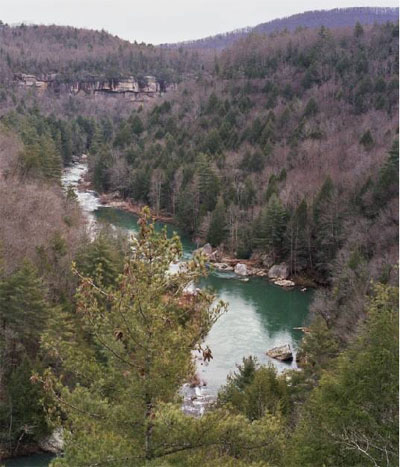Climate Change Effects on Tennessee Forests

Examining transient responses of Tennessee forests to projected climate change provides a means to consider how forest characteristics affect ecosystem responses to perturbations. Our hypothesis is high diversity of dominant life forms in Tennessee forests conveys resilience to disturbance such as climate change. Because of uncertainty in climate changes and its effects, three climate change scenarios for 2030 and 2080 from three General Circulation Models (GCMs) were used to simulate a range of potential climate conditions for the state. These climate changes derive from the Intergovernmental Panel on Climate Change (IPCC) “A1B” storyline that assumes rapid global economic growth. The precipitation and temperature projections from the three GCMs for 2030 and 2080 were related to changes in ecological provinces in Tennessee using the monthly record of temperature and precipitation from 1980 to 1997 for each 1 km cell across the state as aggregated into the provinces. Temperatures are projected to increase in all ecological provinces in all months for all three GCMs for both 2030 and 2080. Precipitation differences from the long-term average are more complex but less striking. The forest ecosystem model LINKAGES was used to simulate conditions for five ecological provinces from 1989 to 2300. Average output projects changes in tree diversity and species composition in all ecological provinces in Tennessee with the greatest changes in the Southern Mixed Forest province. Projected declines in total tree biomass are followed by biomass recovery as species replacement occurs in stands. The Southern Mixed Forest province results in less diversity in dominant trees as well as lower overall biomass than projections for the other four provinces. The biomass and composition changes projected in this study differ from forest dynamics expected without climate change. These results suggest that biomass recovery following climate change is linked to dominant tree diversity in the southeastern forest of the US. The generality of this observation warrants further investigation, for it relates to ways that forest management may influence climate-change effects.
For more information, contact:
Virginia Dale (dalevh@ornl.gov, 865-576-8043)
Reference:
Dale, VH, KO Lannom, ML Tharp, DG Hodges, and J Fogel. 2009. Effects of climate change, land-use change, and invasive species on the ecology of the Cumberland Forests. Canadian Journal of Forest Research 39:467-480.
Dale, VH, ML Tharp, KO Lannon and DG Hodges. 2010. Modeling Transient Response of Forests to Climate Change. Science of the Total Environment. 408:1888-1901.
